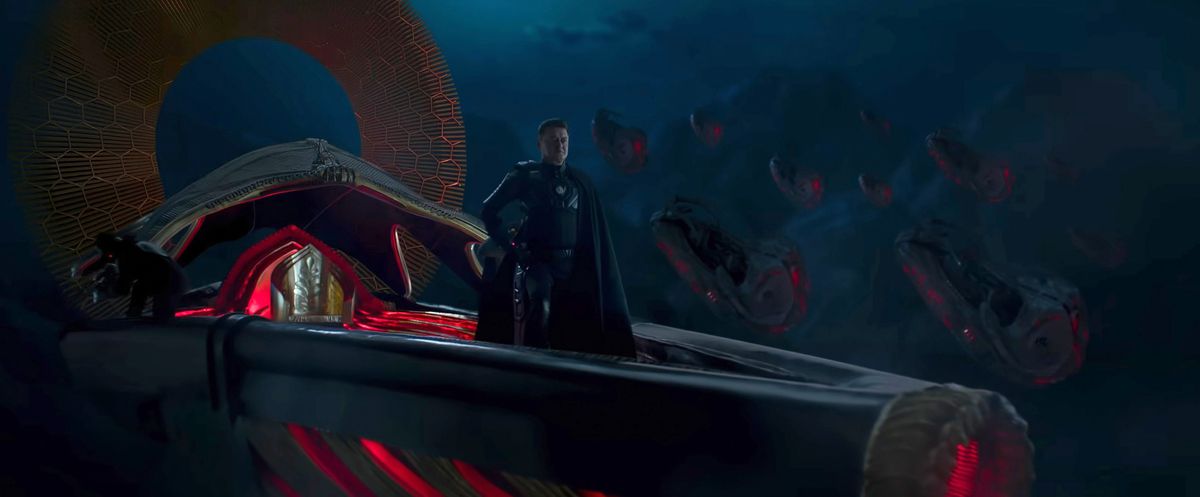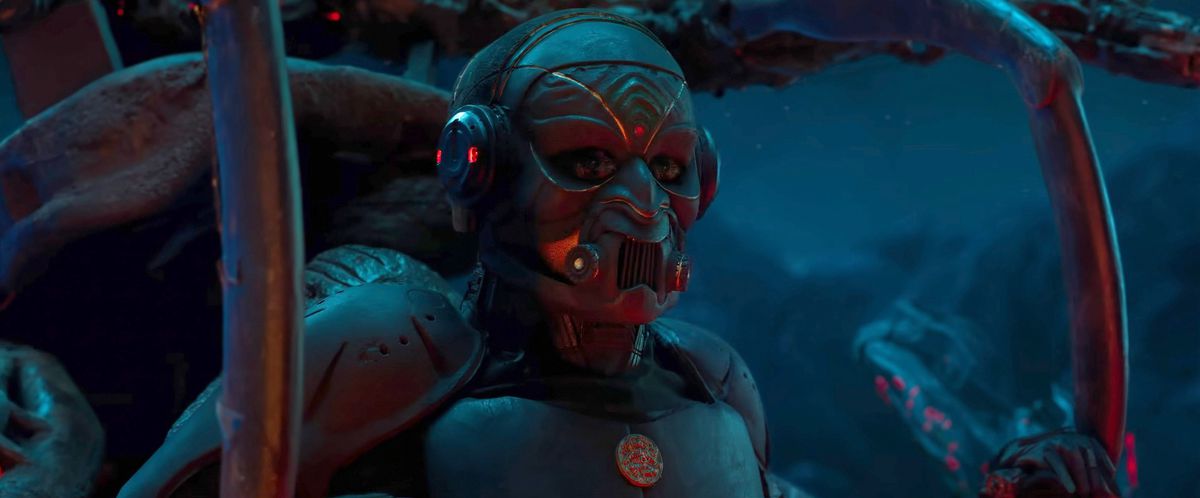Kalki 2898 AD was openly designed to be both the Indian answer to Star Wars and the next RRR
Actor Amitabh Bachchan is a metaphorical giant of Indian cinema, a superstar of proportions that dwarf even American A-list celebrities. In the Indian sci-fi epic Kalki 2898 ADhis stature becomes literal: in his role as the 2.13 meter tall immortal warrior Ashwatthama, the 81-year-old towers over his younger co-stars, who are all attractions in their own way. (A useful way for the uninitiated to gauge an Indian actor’s relative fame is to note the length of their introduction in a film – the bigger the name, the more elaborate the entrance.) The sheer amount of star power in this film is overwhelming, but that’s not even the most ambitious thing about it.
Writer-director Nag Ashwin means for Kalki 2898 AD to be nothing less than the ultimate sci-fi epic. Its scope is vast, spanning 6,000 years of mythological history. Its running time is long, telling the first part of a two-part story over three busy hours. (To be fair, Denis Villeneuve’s Dune movies aren’t much shorter.) And they were expensive to produce — reportedly approximately $72 millionone of the biggest budgets ever for an Indian film. The filmmakers hope it will be a crossover event, similar to SS Rajamouli’s record-breaking hit RRRnot only within India’s various film industries (Bachchan is known as a Bollywood actor, while co-stars Prabhas and Kamal Haasan work in Telugu and Tamil films respectively), but also internationally.
The film’s look, rendered almost entirely via CGI, will certainly feel familiar to Western audiences, with elements reminiscent of the beloved science fiction franchises Blade Runner., Star Wars, The Matrix, Dune, And, in particular Mad Max: Fury Road. More specifically Indian, the story takes the Hindu myth of Kalki – the tenth and final incarnation of the god Vishnu, who will lead humanity into a new age of peace and justice – and brings it to a dystopian sci-fi setting. But while references to magical weapons and folkloric heroes may go over the heads of all but the most informed foreign viewers, the storyline follows the familiar beats of a Chosen One story.
Image: Vyjayanthi films
This first chapter of the Kalki 2898 AD The saga spends much of its running time setting up its characters and world, beginning with a caravan of refugees arriving in the futuristic city of Kasi, the last outpost of civilization after drought and pollution have left much of the planet uninhabitable. Life is cheap in Kasi, where a single chicken egg fetches the same price as a human on the black market. The only exceptions are fertile women, who have become extremely valuable in this dystopian future world: whenever one is discovered, it’s sold and shipped to the Complex, a floating pyramid above the city where a wealthy minority hoards what few natural resources are left.
SUM-80 (Deepika Padukone) is one of these women, and one of hundreds who live as lab rats at the pleasure of Supreme Yaskin (Haasan), a 200-year-old tyrant who extends his life by extracting a serum from the womb of impregnated female prisoners. The women die in the process, but it doesn’t matter; their corpses are thrown into an incinerator and new girls take their place. SUM-80 understandably wants to live, so she hides her pregnancy from everyone around her. But it’s been five months, and the sadistic doctors running this so-called Project K will soon notice.
Outside the Complex, things are grim in a different way, though friendly bounty hunter Bhairava (Prabhas) does his best to keep the mood light. Indian films tend to mix genres, and though Kalki 2898 AD. is more serious than most Bollywood fare – there are, alas, no real musical numbers, though characters do lip-sync to Santhosh Narayanan’s original songs – Bhairava and his wisecracking AI companion Bujji (Keerthy Suresh) bring some much-needed Star Wars-esque comedic banter to the film. Bhairava is a Han Solo type, motivated by self-interest and the pursuit of cash, or “units.” Like Han, he’s also a ladykiller, as we learn when the similarly mischievous Roxie (Disha Patani) enters the story.

Image: Saswata Chatterjee, Sri Venkateswara Creations/Everett Collection
At first, it’s unclear how SUM-80, Bhairava, and the 6,000-year-old stalwart Ashwatthama, who spends much of the film holed up in a cave, are all connected. There’s no doubt, however, that they will eventually meet, or that each will play his or her part in fulfilling the prophecy preached by a rebel group living in a hidden utopia known as Shambhala. Eventually, the action shifts to the rebels’ sacred refuge. But first, SUM-80 must speed across the wasteland, pursued by both Supreme Yaskin’s lackeys and Bhairava, who plans to trade this precious hostage for access to the complex.
Some of the digital backgrounds that VFX supervisor Praveen Kilaru and his team created for us Kalki 2898 AD are absolutely stunning, and sci-fi fans who like to look around at cool ships and cool vehicles will find a lot to enjoy here. (The design for Bujji, who can transform from a cool car into a cooler battle robot, is especially fascinating.)
But the fact that this is only the first part of a two-part story creates some serious structural problems. The first two hours of the film move at a brisk but leisurely pace, but the last hour tries to cram too much into an already overstimulating epic battle scene. It feels panicky and confused as it races through crucial plot developments and exposition.

Image: Saswata Chatterjee, Sri Venkateswara Creations/Everett Collection
Comparisons between Chalk And RRR are inevitable, if only because the former openly tries to emulate the success of the latter. But Nag Ashwin’s film lacks a few elements that RRR so charming: There is no central bromance, no exciting dance sequences and no sense of surprise. There is comedy, but it is isolated in certain parts of the film, and there is much less romance and music than audiences might expect. It’s still an entertaining ride, with some cool visuals and exciting chase scenes. But by channeling the seriousness of Western sci-fi films, Kalki 2898 AD loses some of the reach that makes Indian films special. Its ambition is to be applauded. It is not so much the seriousness of the self.
Kalki 2898 AD is now in theaters worldwide.
